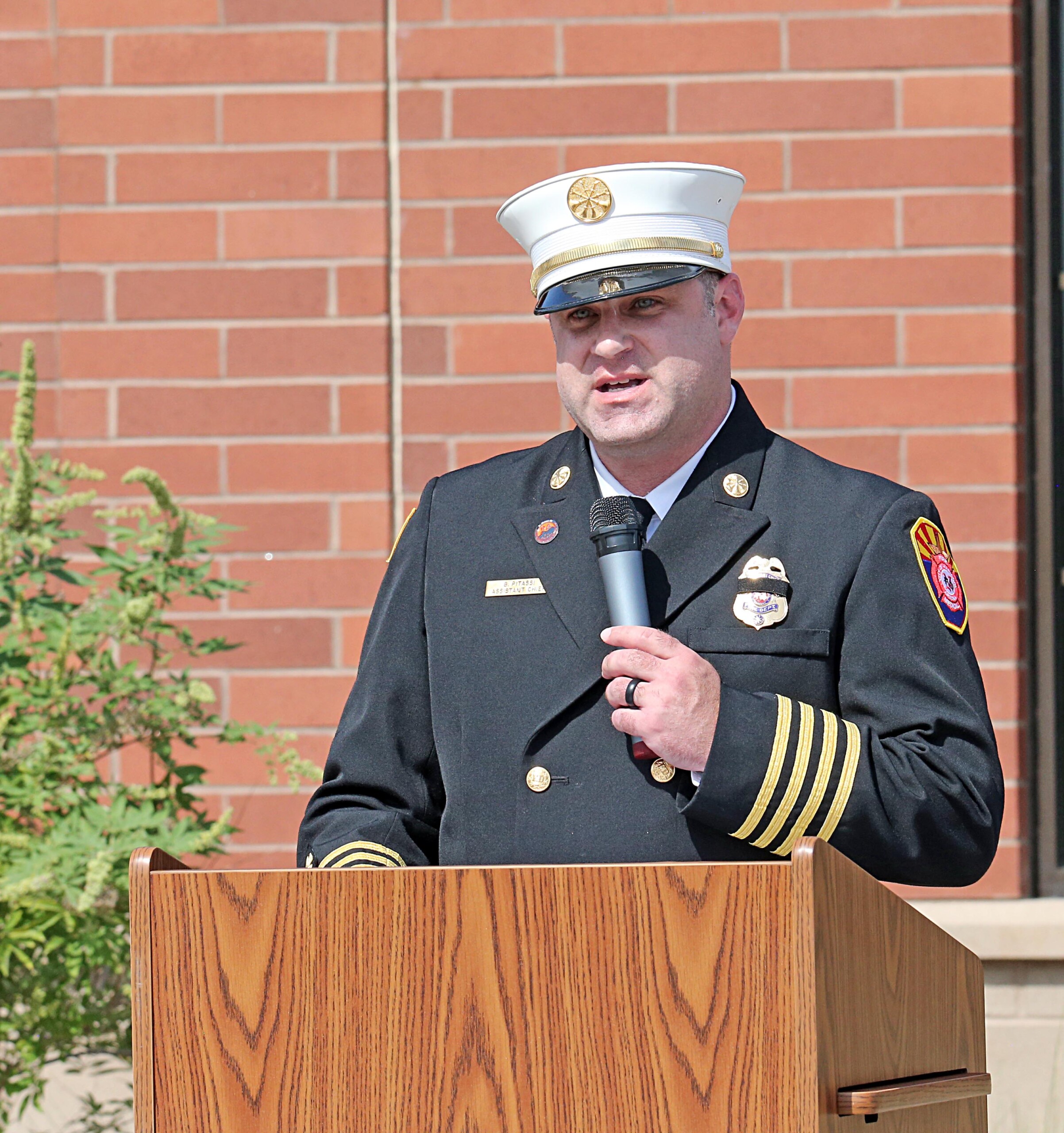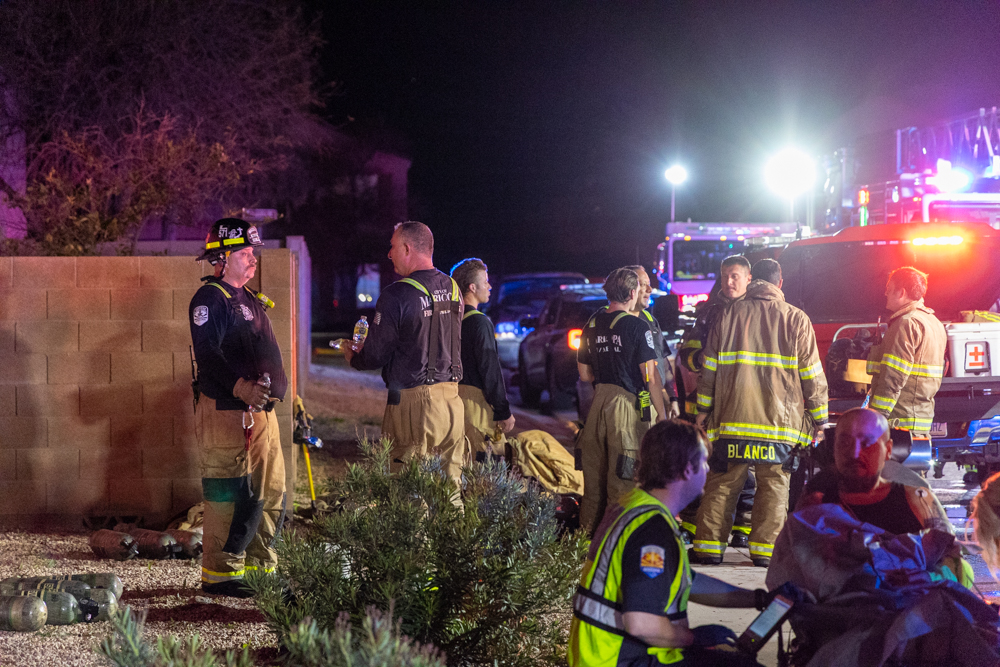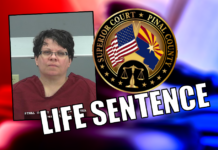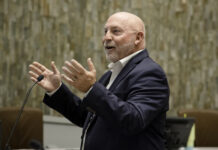Maricopa Fire and Medical Chief Brad Pitassi has risen from one of its first firefighters to the top of the department during his 17 years.
He has experienced the basics of providing firefighting and paramedic services, but he also advised a team that provided emergency communications for the Super Bowl and deployed to emergencies across the country, including the tragic Yarnell Hill fire in Prescott.
One thing that sticks out to him above all: riding on a fire truck with his crew.
“I loved it. I loved being in firehouses, working with crews, being in the back seat and in the front seat as a captain,” he said. “I spent a third of my life in firehouses. When I go now for chief’s visits, it’s like putting on a worn-in pair of sneakers, it’s just so (comfortable and familiar).

“You can’t replace that feeling of being on a crew going on calls. It just can’t be replicated anywhere. It’s the greatest experience in the world. Now it’s my obligation to care of them and administer the department, because if I’m not taking care of them, they aren’t taking care of our community.”
Pitassi has been with the department since it was overseen by Pinal County, before it became an official city department in 2006.Since then, Pitassi has risen steadily through the ranks.
“To be honest, I had a perfect career path laid out when I started,” Pitassi said. “I figured I’d be a firefighter for about five years, become a captain in about 10 years, in 15 years I’d get into administration, then become a deputy chief and finally fire chief.”
Indeed, he was a firefighter for three years, including a stint as the department’s public-information officer through 2009, when he became a firefighter/paramedic. In 2018, he was promoted to captain.
He was named to the dual role of battalion chief/deputy chief 2019 and became assistant chief the following year. He was appointed interim chief in March 2022 and assumed the permanent chief’s role in October.
Because the department initially was small, administrative roles didn’t exist. That created a bottleneck for promotions.
“The dominos didn’t fall out exactly the way I’d planned, but I always wanted to figure out ways I could give back more to the department,” he said. “There were no promotions in the department for about nine years because the (organization) chart didn’t allow for it. There were no growth opportunities due to our small, narrow org chart. It was like that until 2013 when (former chief Brady) Leffler came.”
Pitassi said through about 2007, Maricopa Fire went from its original seven to 63 firefighters. As a result, all of the senior employees were promoted at the same time, but with no administrative roles available.
“One of the first things Chief Leffler did was look at the org chart and say that we were ‘suffocated growth,’” Pitassi said. “When we grew the capacity in administration, it opened opportunities.”
Pitassi then began putting his dual masters degree in public policy and administration to use. Prior to Leffler’s arrival, he dedicated himself to training, gaining experience and completing his post-graduate education.
“lf opportunity doesn’t knock, build the door,” Pitassi said.
After he slid into the public-information officer role, doors to make larger contributions opened. Pitassi believes his strength is his ability to communicate.
“That doesn’t mean telling people what they want to hear but telling them in a way they understand where I’m coming from,” he said. “(I’m) not trying to get 100% agreement, but I want to be sure they understand what I was thinking.
“The flip side of that is I have a great vision in my head for this department. Sometimes I have to take a step back to see their perspective and ask how I can present my vision to them, so they understand it.”
He spent 10 years on the Southwest Area Type 1 Incident Management Team. He gave that up due to time constraints when he became Maricopa’s chief.
While on the Type 1 team, he came to work on major incidents around the country, which included the Yarnell Hill fire.

“When you work on a T1 team you are going to the worst day a community has ever had. It’s rewarding to have people in these communities give you a big hug and thank you for just being there. I don’t know what it’s like to lose your house or lose everything you have to a natural disaster, but to be able to give the right information to those people at the right time, provide resources and guide those resources to those most impacted, is truly rewarding.”
His new boss, Deputy City Manager/Chief Public Safety Officer Micah Gaudet, who was hired last fall, is impressed with Pitassi’s passion for taking care of his firefighters and giving residents and guests receive the best care and response.
“As an innovator, Brad continues to find ways to improve MFMD,” Gaudet said.
Gaudet cited the department’s recent rollout of a low-acuity vehicle, which is staffed by two crew members who can be deployed to medical emergencies that require basic life-support services. That frees fully equipped fire engines to respond to high-acuity medical calls that require advanced paramedic care and advanced life support, as well as for fire calls.
“These types of innovation will position the city to continue to deliver excellent fire and medical services, whether we are a population of 70,000 or 170,000,” Gaudet said. “The goals of maintaining and enhancing our physical environment and ensuring a safe and secure environment are accomplished by embracing change and challenging the status quo.”
Pitassi has been quickly embraced by his counterpart at Maricopa Police Department, new Chief Mark Goodman.
“Chief Pitassi is a talented and gifted leader,” Goodman said. “He has warmly welcomed me onto the city of Maricopa public-safety leadership team and helped to make me feel right at home. Chief Pitassi and I share a spirit of collaboration and I know that the partnerships we are forging together will serve the Maricopa community for years to come.”
Pitassi sees plenty of ways he can put those to work for the city.
“The biggest challenge is keeping up with the pace of growth,” Pitassi said. “We’re growing so fast and expanding so quickly. Those of us who have been here for a while have seen growth like this before and know what it’s like. We have the same four stations we’ve had since 2007, so we have to ask ourselves if that is sustainable when we have 100,000 people with the same number of resources.”
Decisions made today will have an impact for 10 to 20 years, so he is diligent in balancing short-term and long-term needs.
“What keeps me up at night is (whether we) are we staying ahead of the curve,” he said. “Anticipating demands, forecasting growth.”
Now that he oversees the 73-person department and its $10 million annual budget, he said he relies on having people around him who challenge him.
“I can’t tolerate ‘yes’ people who agree with whatever you say,” he said. “My mentors call balls and strikes. They tell it like it is and that’s what I like.
“I know I still have a lot to learn. I told the staff when I was hired that if they were looking for a perfect fire chief, I was going to let them down.”


![3 things to know about the new city budget Vice Mayor Amber Liermann and Councilmember Eric Goettl review parts of the city's 2024 operational budget with Mayor Nancy Smith on April 24, 2024. [Monica D. Spencer]](https://www.inmaricopa.com/wp-content/uploads/2024/04/spencer-042424-preliminary-budget-meeting-web-218x150.jpg)






![MHS G.O.A.T. a ‘rookie sleeper’ in NFL draft Arizona Wildcats wide receiver Jacob Cowing speaks to the press after a practice Aug. 11, 2023. [Bryan Mordt]](https://www.inmaricopa.com/wp-content/uploads/2024/04/cowing-overlay-3-218x150.png)



![Alleged car thief released without charges Phoenix police stop a stolen vehicle on April 20, 2024. [Facebook]](https://www.inmaricopa.com/wp-content/uploads/2024/04/IMG_5040-218x150.jpg)

![3 things to know about the new city budget Vice Mayor Amber Liermann and Councilmember Eric Goettl review parts of the city's 2024 operational budget with Mayor Nancy Smith on April 24, 2024. [Monica D. Spencer]](https://www.inmaricopa.com/wp-content/uploads/2024/04/spencer-042424-preliminary-budget-meeting-web-100x70.jpg)


